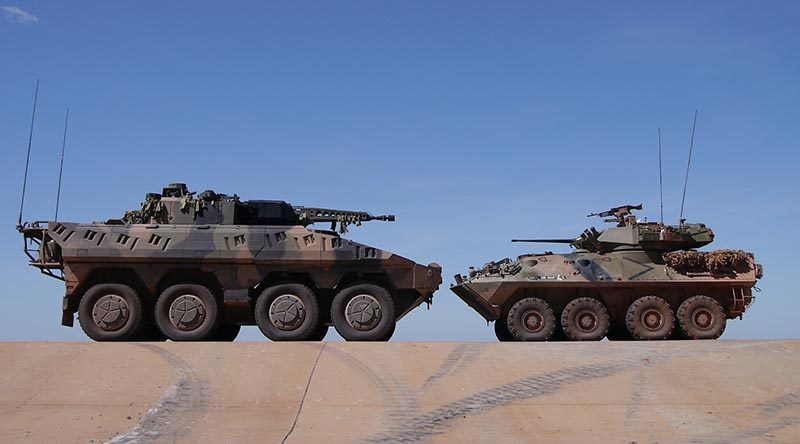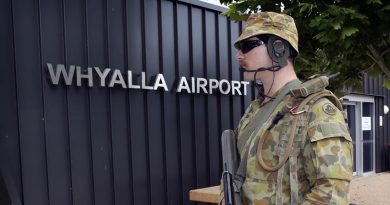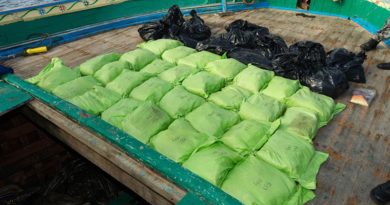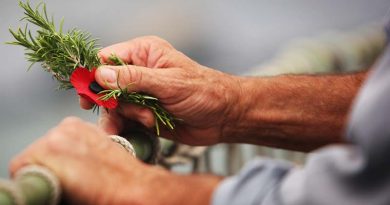Armour in the Australian Army : Is There Something Wrong? Part 2
Share the post "Armour in the Australian Army : Is There Something Wrong? Part 2"

For those interested in Army’s most expensive acquisition ever … LAND 400 Phase 3 ($15b) is intended to provide 450 IFVs and 17 MSVs (manoeuvre/mobility support vehicles).
FILE PHOTO: Rheinmetall Boxer CRV with an in-service Australian Light Armoured Vehicle (ASLAV).
What is the basis for the 450?
Let’s work on a three rifle coy/four pl peacetime model per infantry battalion and start with one battalion per brigade to be equipped with IFVs.
Four IFVs per platoon, amounts to 48 vehicles; when we include three CHQ (three vehicles each, including two command variants); three coy echelons (four cargo variants each) support company (10 vehicles); tech support (nine repair and recovery variants)) and BHQ (five vehicles), we have a total of 93 IFVs per battalion.
Three battalions equals, 279 IFVs.
Infantry Centre, RTC, and repair-pool requirements brings the total to 350.
But, with approximately 100 IFVs per battalion, 450 IFVs provides for four battalions.
Is the intention to equip one battalion in 1 and 7 Brigades and two battalions in 3 Brigade? (3 Brigade has three battalions, but 2RAR has an amphibious role.)
What if the ACR organisation was one tank squadron, two cavalry squadrons and one mechanised infantry squadron? This would meet the organisational needs for 1 and 7 Bde. What of 3 Bde?
The breadth of command for an ACR CO with a tank squadron, two cavalry squadrons and two mechanised infantry squadron, would be stretched to the extreme.
But what if a cavalry squadron and a mech inf squadron were to be grouped separately. So, 3 Bde would comprise an ACR, ACR (-), two inf bn (mech), and one inf bn (amphibious).
One difference between this and the current intention (or so it seems) is that the IFVs would be operated by the RAAC (as APCs used to be).
The other difference is that the structure would offer greatly enhanced operational benefits (while also being much more cost efficient).
READ MORE ON THIS TOPIC: HERE
.
.
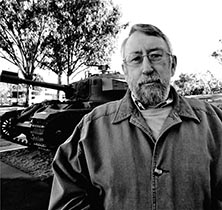
Bruce Cameron served in the Australian Army for 19 years, commanded the last troop of tanks in action in Vietnam and attend the UK’s Long Armour Infantry Course and Royal Military College of Science, as well as the Australian Command and Staff College. In his last appointment, Bruce contributed to developing the Army’s future ground mobility requirements. He left the Army in 1987 for the Office of Defence Production. Now retired, Bruce lives in Canberra with wife Jasmine. He published a book – Canister! On! Fire! Australian tank operations in Vietnam – in 2012.
.
.
.
.
.
.
.

.
.
Share the post "Armour in the Australian Army : Is There Something Wrong? Part 2"

